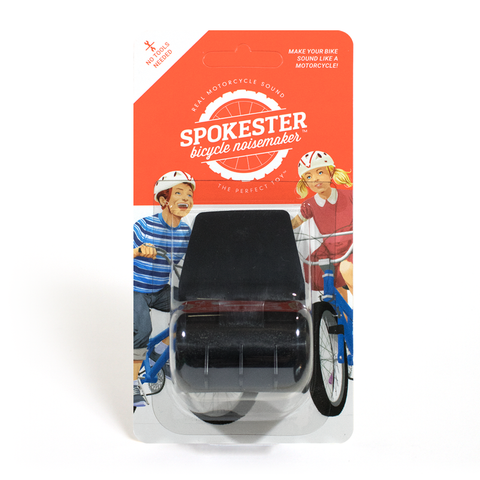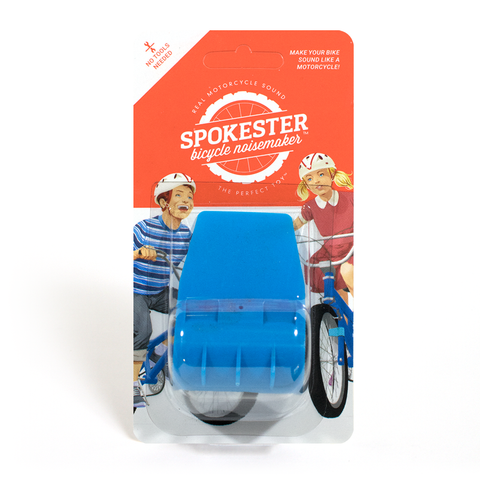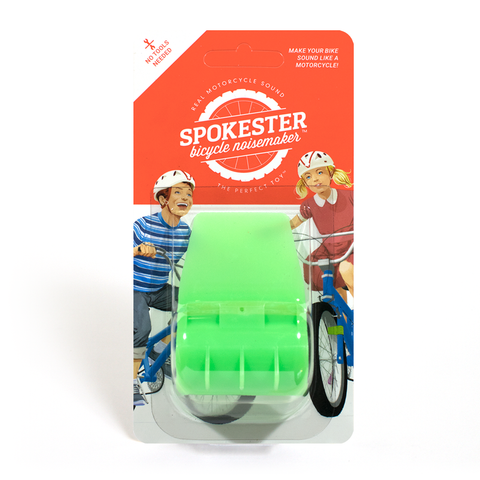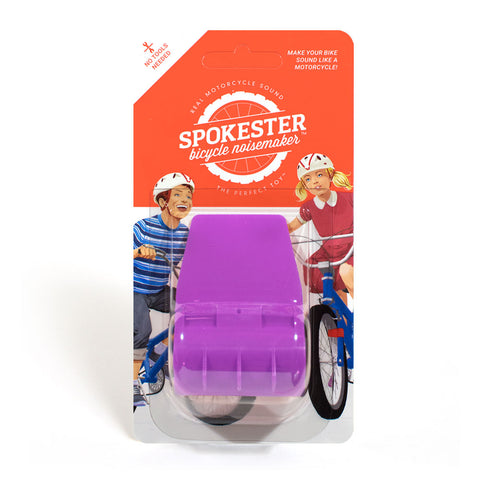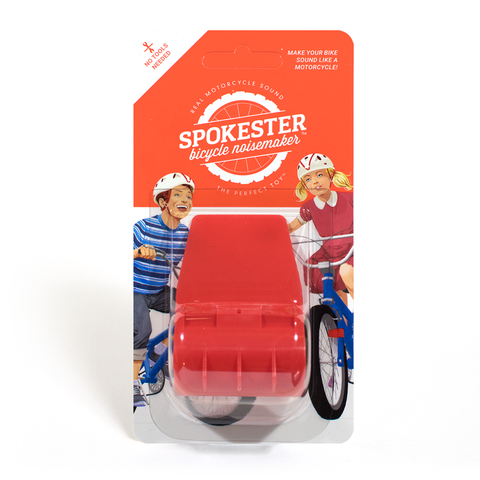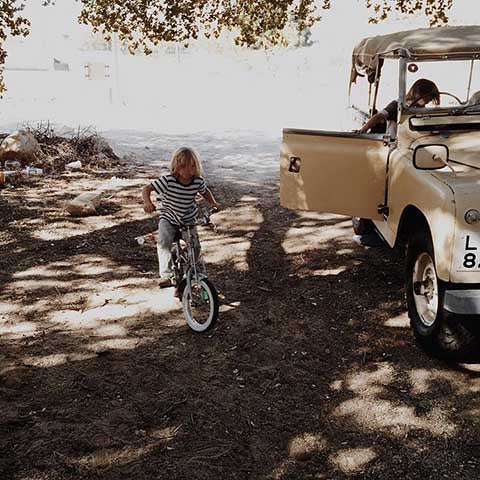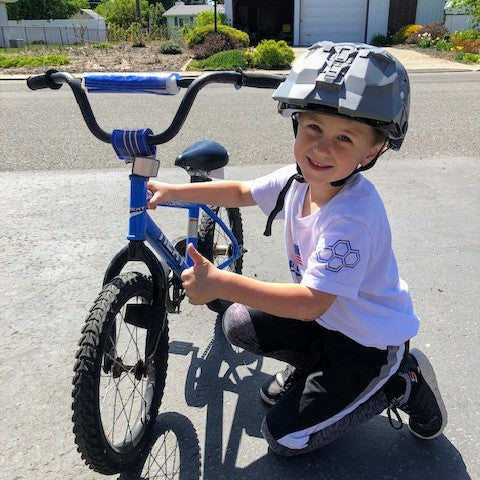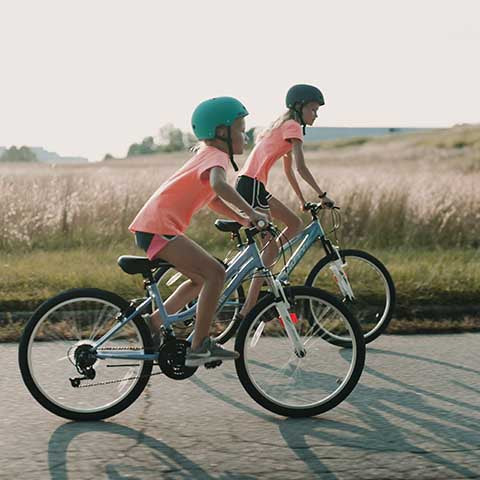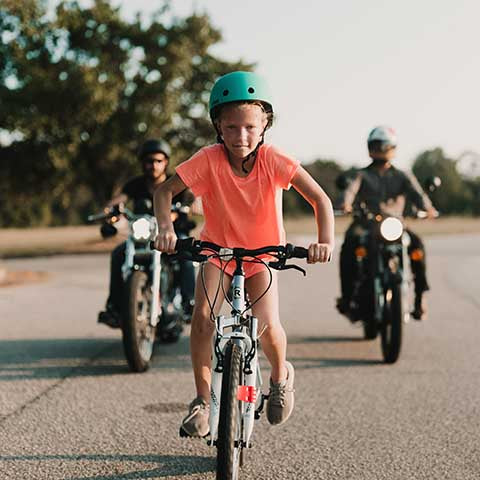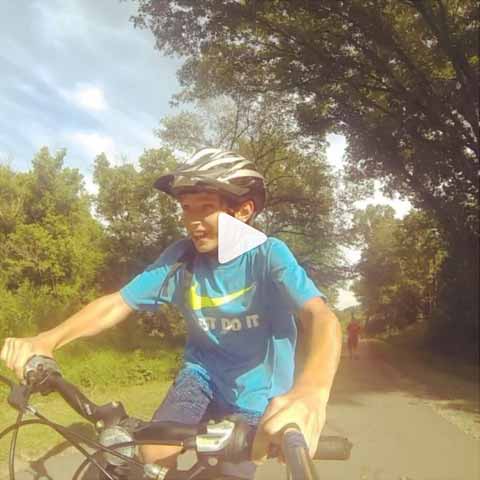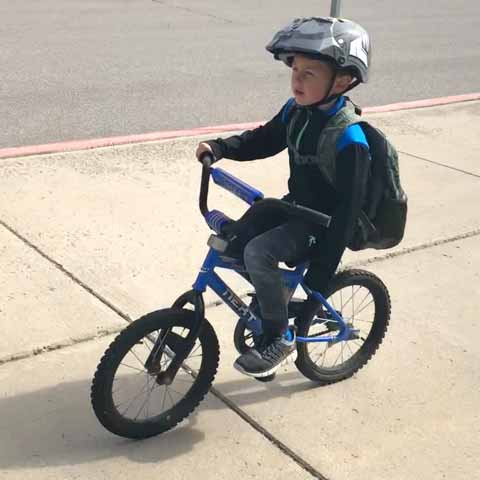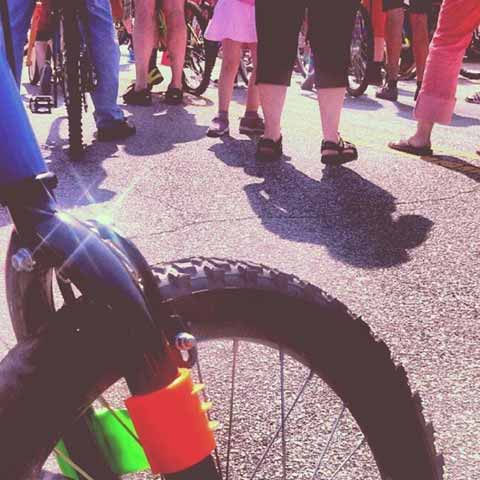Breaking Down the Basics of Fatbikes
What do you get when you cross an MTB frame with Harley tires? Why, only the most crowd-pleasing new contraption on two wheels not involving electricity or scootering!
In a nutshell, fatbikes (sometimes split into "fat bikes") are mountain bikes built for wider-than-normal wheels, usually 4" or more. The corresponding wide tires can be ridden at lower air pressure (i.e., flatter). This allows for better cruising over unconventional surfaces like snow and sand. Fatties have become so popular that many states have created dedicated winter trails for them. There's even a Fat Bike World Championship!
So, don't be surprised if your little ones begin calling for some wide-rimmed rides. If that does happen, we've got you covered. This article gives you the foundation you need to make a sensible decision on fatbikes for your household. Who knows, maybe you'll end up ditching your own roadie once you see what's waiting for you at the department store!
The Origin of Fatbikes
Although this is the subject of some debate, for all intents and purposes fatbiking was an Alaskan contribution to cycling in the mid-80s. One of the founders of the Iditarod dogsledding race, Joe Redington, proposed a similar event using bikes instead of huskies. The idea caught on, and soon bike makers like Surly and Salsa were pumping out bicycles with oversized tires from the Last Frontier to the Lower 48.
The original goal was to build a two-wheeler that performed well on winter terrain, which is why fatbikes for a long time were also referred to as "snow bikes." But, it didn't take long for powder-free pedalers to figure out how much fun they could be on dry ground. This encouraged brands to continually improve fatbike designs and equipment. They solved drivetrain issues, improved geometry and weight factors, and introduced aluminum and carbon fiber materials for a better, more versatile riding experience.
Fatbike Features
Corner a fatbike enthusiast at a dinner party and you'll probably be able to rewrite the Wikipedia page by the end of the night. We, on the other hand, aren't going to dump too much on you here. Instead, we'll simply share a few of the more important things to keep in mind about the bike itself.
Q Factor
Sometimes referred to as stance width, a bike's Q factor is the distance separating the outer points of each pedal's crank arms (for more on crankset components, check out our bicycling glossary). This tends to be larger on fatties to accommodate wider tires as well as bigger footwear during the winter. Just how large? Well, you'll get different answers from different people. A Q factor in the neighborhood of 168–178mm is generally considered ideal. The comfort range typically falls between 157–225mm to account for riders of different sizes. Exceptions can occur for people with knee or hip issues, which require a narrower stance width closer to 100mm.
The reason for wider stances to account for wider tires in the first place can be summed up in one word: float. More tire offers more air for more cushioning. This is great for extreme conditions that require greater traction and shock absorption. Of course, all that rubber and air lead to heavier and bouncier rides on faster and firmer ground. Some models therefore allow you to switch out beefy tires for more slender ones as the need arises.
Pound Per Square Inch (psi)
We won't delve too deeply into psi here since we cover that in a post dedicated to tire inflation. Suffice it to say that psi can make or break your ride through snow. And what works for you may not work for someone else, so it's all about experimenting with different inflation levels. That said, you'll want to stay much lower on the scale than you would with other types of bikes.
Here are some general guidelines to use as a starting point for finding the right float for you:
- Soft snow: Looser powder requires lower pressure, usually around 2 psi.
- Firm snow: For more packed conditions or general trail use, most people hover in the 8–12 psi range.
- Rough terrain: More pressure improves bike handling over firm or rocky surfaces, so consider starting with 14 psi or so.
By the way, conditions can quickly change, especially during races or on long rides. Feel free to adjust tire pressure along the way to keep your ride as comfortable and maneuverable as possible.
Suspension
Determining whether your or your kid's mountain bike needs suspension is a topic all its own. For our purposes here, should you use suspension systems on fatbikes? At the risk of sounding vague, maybe.
Most fatties feature rigid forks, particularly in super-low temps. Suspension in the majority of cases simply isn't necessary. In fact, going over snowbanks and bumpy ground on wide tires at low pressure can almost feel like suspension since the wheels absorb obstacles and mitigate deformities in the ground.
Now, if the surface happens to be rocky, sharp, or otherwise considerably uneven, you may want to pair suspension with higher tire psi for better comfort and control. It really all comes down to how you intend to use the bike. At the end of the day, though, don't feel the need to invest in a suspension system if you don't want to. Fatbikes will perform well on most types of terrain regardless of this feature.
Why Fatbikes Are Awesome
Less than five years ago, fatties were the fastest-growing segment in cycling. The number of manufacturers building them doubled practically overnight for various reasons. Here are a few of the biggest.
Fatbikes are Versatile
Hopefully we've established by now that fatbikes are pretty money on snow. For similar reasons, they're also great on sand, the other most common surface for their use. But if you think those are the only places you can have fun tooling around on these things, you don't know what you're missing!
Wide tires, low pressure, and high traction can help you float over all kinds of ground where standard MTBs or road bikes might get pulled down. Dirt, mud, meadow, rocks, single track, desert, ruddy pavement….these guys can handle just about anything. Because of this, they make for great bikepacking transpo. It's not uncommon to see fatbikes with racks or trailers hauling group gear around the backcountry these days.
The multi-use nature of these bicycles offers an attractive proposition for year-round riders. And as we mention above, some models allow you to switch out fat rims (usually 26") for standard rims (usually 27.5" or 29") depending on how you want to use your two-wheeler.
Fatbikes are Inviting
Because they're so versatile, fatbikes appeal to a wide variety of people. This is one of the reasons why the cycling industry loves them—they're bringing in new groups of consumers who may never have thought much about biking before. Being stable, smooth, and practically barrier-less makes them enjoyable for serious and casual riders alike.
This audience expansion contributes to the continual cycle of innovation. As rider diversity grows, bike makers are introducing ever-more-functional designs. Some are built for touring, while others are built for speed and agility. And many now mimic traditional MTBs. The angles, dimensions, and weights of models like the Fatback Skookum deliberately resemble your everyday trail bike. There are also 20" and 24" wheel options for younger riders who want to join in on the fun.
In other words, fatbikes aren't just fad bikes. They're here to stay.
Fatbikes are Fitness-Friendly
There aren't many options when it comes to outdoor conditioning during the winter months, especially if you're located in blizzard territory. Sure, you could chop endless supplies of firewood, run up snowbanks, or lift boulders in a barn somewhere (hey, it worked for Rocky). OR, you could break out your cold-weather-ready fatbike and shred some pow to stay in shape.
Cycling is a great workout and a nice way to get your kids exercising with you. Fitness gurus have found that riders can burn as many as 1,500 calories an hour on a fatty. They also claim that recovery time is faster since cycling isn't weight-bearing (unlike activities such as running). Some ski areas even offer fatbike rentals for skiers who like to use them for cooldowns or cross-training.
If you've been having trouble keeping that New Year's health-club resolution, try asking Santa for a fatbike this year.
And that, ladies and gentlemen, is your topline look at the monster truck of the biking world. If biking makes us happy, it would seem fatbiking is making more and more people even happier. Just remember that all those great qualities—stability, smoothness, comfort, all-terrain performance—do help with safety but don't eliminate danger. Make sure you and the kiddos are all taking the proper precautions each time you leave the garage.
So with that in mind, let the oversized times roll!
← Older post Newer post →
